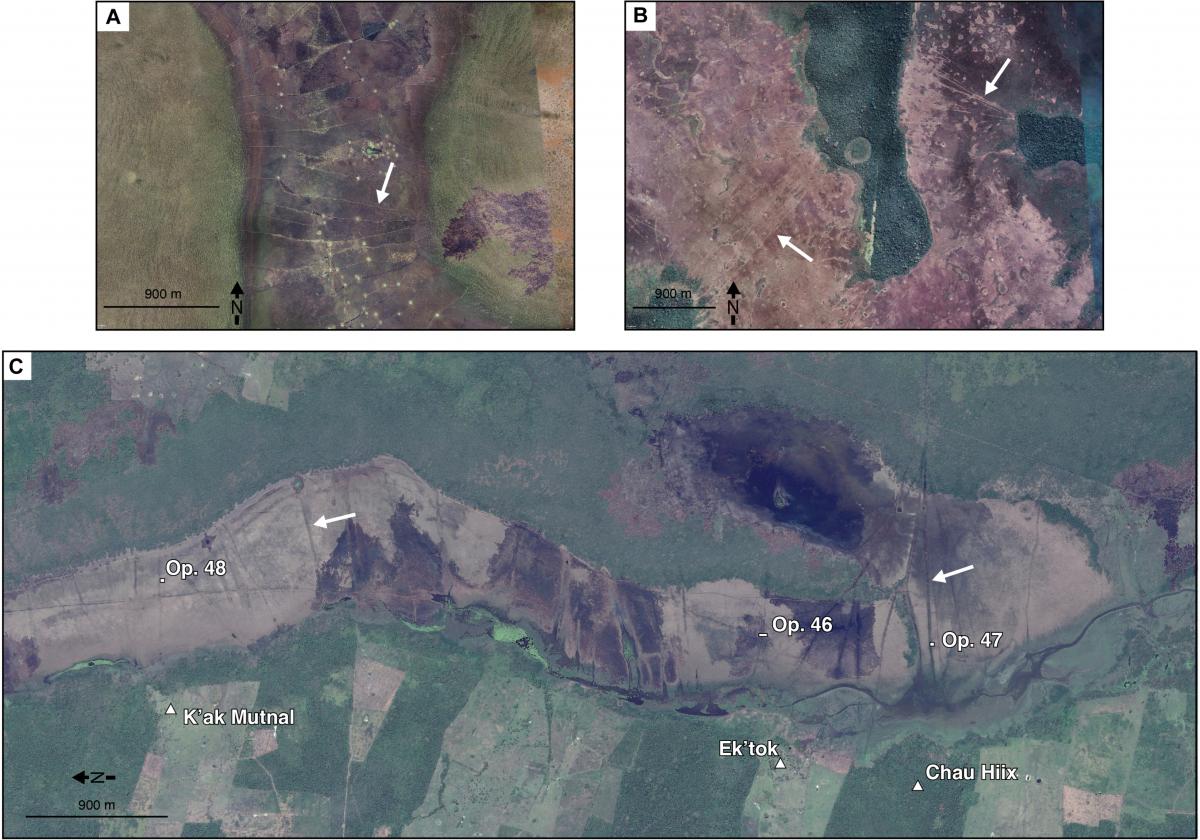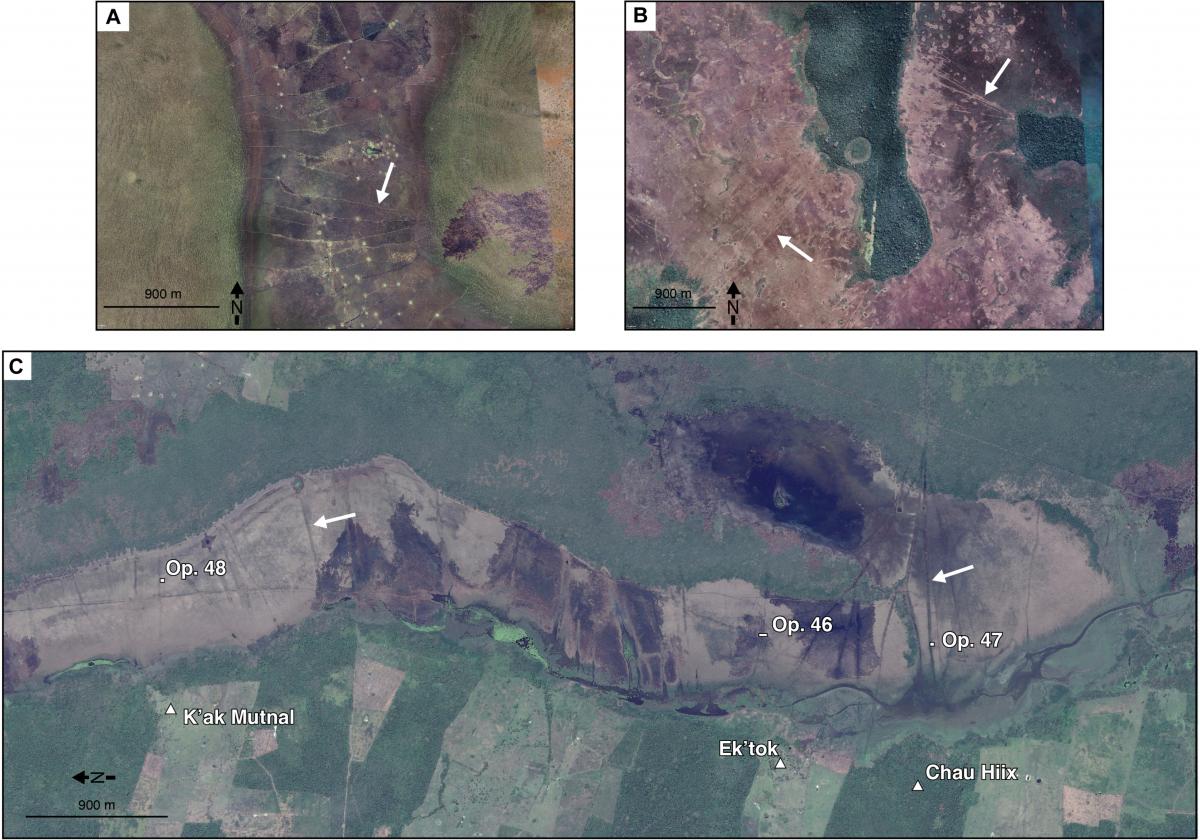“Fishing facilities could encourage people to gather and build permanent settlements, and later cities.”, — write: www.unian.ua
Fishing facilities could encourage people to gather and build permanent settlements, and later cities.
 The team of scientists used satellite images and aerial photos taken by drones / Google Earth photosA huge number of ancient structures for fishing, created by the direct ancestors of the Mayans, have been discovered in Belize.
The team of scientists used satellite images and aerial photos taken by drones / Google Earth photosA huge number of ancient structures for fishing, created by the direct ancestors of the Mayans, have been discovered in Belize.These structures could catch enough fish to feed up to 15,000 people a year: they consisted of a network of canals and ponds that directed the fish to areas where they could be easily caught, Live Science writes.
Hunter-gatherers built these complex webs about 4,000 years ago, during the Archaic period, when people in the region did not practice large-scale agriculture, the scientists said in a study published in the journal Science Advances.
“This is the earliest large-scale Archaic fishing structure recorded in ancient Mesoamerica,” they wrote.
The success of these hunter-gatherers is said to have helped form the Maya, a civilization that later came to dominate the Maya lowlands of Central America and what is now southern Mexico.
These fishing structures could encourage people to gather and build permanent settlements and later cities. Study co-author Marieka Brauer Burg, a professor of anthropology at the University of Vermont who co-led the group, said:
“It appears that the canals enabled annual fishing and social gatherings, which encouraged people to return to the area year after year and gather together for longer periods of time. Such intensive investment in the landscape may have ultimately led to the development of a complex society, characteristic of the pre-Columbian Maya civilization, which subsequently took place in this region around 1200 [до н. е.]”.
At the time the fishing structures were built, the region was becoming drier and people could struggle with drought. This could encourage people to band together and build structures to provide themselves with enough food.
The team of scientists used satellite images and aerial photographs taken by drones to identify the canals and ponds. They also carried out excavations and radiocarbon dating of organic sediments and charcoal to determine when the fishing traps were built.
Researchers say that the Maya continued to use these fishing traps during the Formative Era (from about 2000 BCE to 200 CE). Thomas Gooderjan, professor of anthropology at the University of Texas at Tyler explained:
“Honestly, this discovery is astounding. We’ve always thought that large-scale land-shifting projects took place during the Classic Maya period, or from about 250 to 900 AD.”
According to Guderjian, the research may prompt scientists to reconsider what the Maya were like about 4,000 years ago.
Nicholas Dunning, a geography professor at the University of Cincinnati who has studied the Maya extensively, also praised the research.
“Over the past few decades, quite a few ancient Maya researchers, myself included, have suggested that aquaculture may have played an important role in the development of Maya civilization. However, this study is the first that I know of that specifically attempts to test this hypothesis. The study is important work. , which helps ancient Maya researchers understand the origins of settled society in the region,” Dunning said.
News about the study of the MayaArchaeologists have discovered pyramids, sports grounds, dams and amphitheatres in the southeastern state of Campeche. They found the hidden complex, which they named Valerian, using lidar, a type of laser surveying that maps structures buried under vegetation. Experts believe that it is inferior in density only to Calakmul – the largest Mayan settlement in Latin America.
You may also be interested in news:
- A 1,600-year-old amulet depicting King Solomon striking the devil with a spear was found in Turkey
- Aztec “death whistles” made the human brain work in a special way
- Archaeologists have found a 1,500-year-old Christian basilica built under the Roman emperor Justinian
